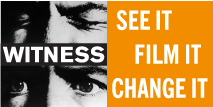Published June, 2017 by Dalila in News and Updates
Can video bring down impunity?
TRIAL International is partnering with the NGO WITNESS to offer an exclusive training in the Democratic Republic of Congo (DRC): using video to prosecute international crimes. TRIAL International’s mission is to fight for justice when international crimes are committed, including genocide, crimes against humanity, war crimes, enforced disappearance, sexual violence and extrajudicial execution. TRIAL International relies on the existing legal framework and is convinced that a judicious yet imaginative use of the law can be a formidable means of dealing with individual cases and bringing about structural change. The NGO also puts the law at the service of the victims of international crimes and works to ensure that the perpetrators of these crimes are brought to justice.
Below we join a Q&A with Daniele Perissi, Head of TRIAL DRC program, Kelly Matheson, Senior Attorney and Program Manager at WITNESS, and Nanjala Nyabola, Africa Program Manager at WITNESS.
How did the idea of video trainings in DRC emerge?
Daniele:DRC is extremely vast and has poor infrastructures. When crimes are committed in the countryside, hours away from the nearest city, presenting evidence in court can be challenging. With videos, gathering and sharing proofs would be faster and easier, and help build stronger cases.
For instance, bringing victims to testify in court can be humanly and logistically challenging. Filming them anonymously and in familiar settings would be less traumatic, and probably yield better results. Footages from the crimes scene, surroundings, etc. will also put their story into context, adding a compelling level of detail.
Are there potential risks to filming?
Kelly: Video is a powerful tool to expose the truth but it also has limitations and can cause harm if not used thoughtfully and carefully. In our training, we include questions to assess when to use a camera, and when to refrain. Security concerns are central, of course: the security of the person filming, of the person being filmed and of the community where the footage takes place.
Is filming an emerging practice in the legal field?
Kelly: Not at all, videos have been used for a long time in domestic and international proceedings. Footages of concentration camps were shown at the Nuremberg trials! The change in the technological landscape today are the video-makers themselves: ordinary people are filming video along side professionals and at a much greater volume. In Syria, for instance, the larger part of the videos is taken by activists, not journalists.
Nanjala: This means a massive increase in the quantity of video, and the trend will only accelerate. Our challenge now is verification. Anyone today can film something and broadcasting it immediately, so establishing the credibility of footage in court has never been so important.
Eastern DRC (where the training will be delivered) is a low-tech region. How will you overcome this difficulty?
Nanjala: WITNESS is used to delivering trainings in low-tech environments. We adapt our training to the available technology, showing how it can best be used. For instance, smartphones are widely used in DRC: we will show trainees how the tool they already have can also help them collect evidence.
Daniele: The training was designed specifically for DRC, so technological limits have been built in from the start. In addition to smart-phone trainings, we also lend cameras to our trainees. Trainings small groups over a long period of time ensures everyone gets a chance to test the tools during the training.
Kelly: Besides, the training goes beyond the question of technological advancement. What truly empowers people is knowing when, why and how to film: material and networks are just the tools.

